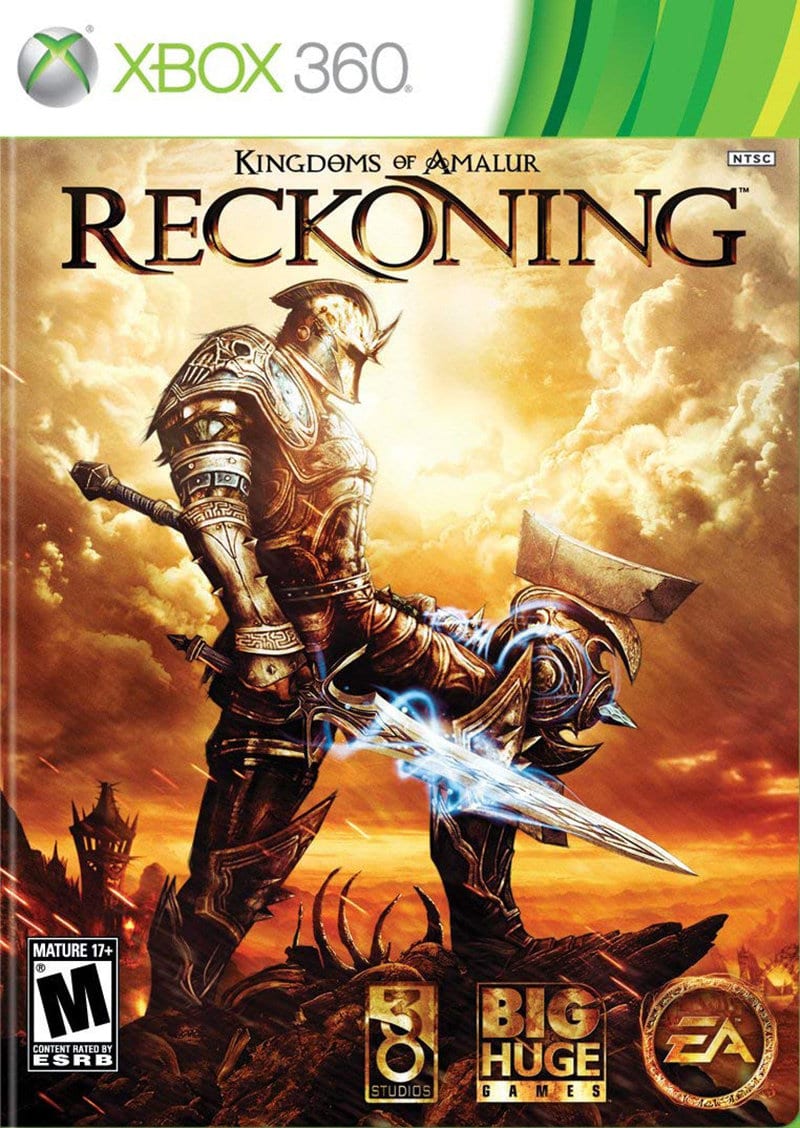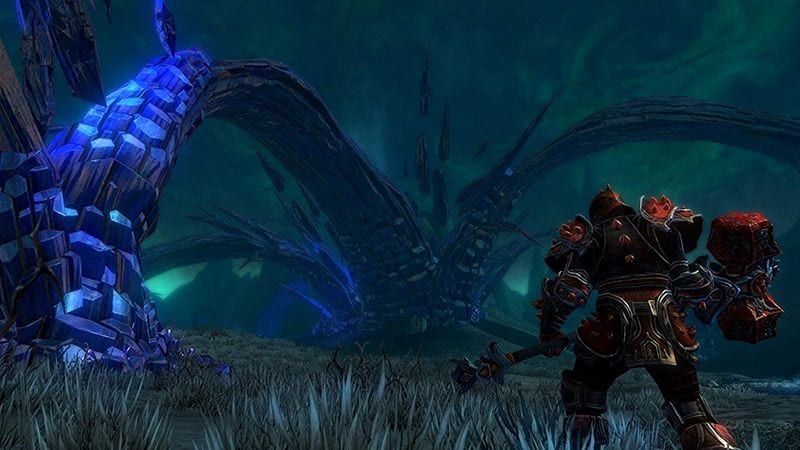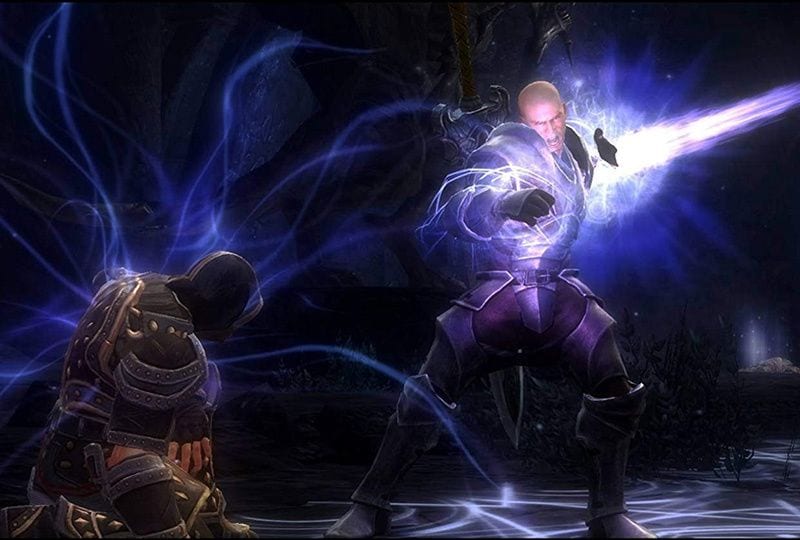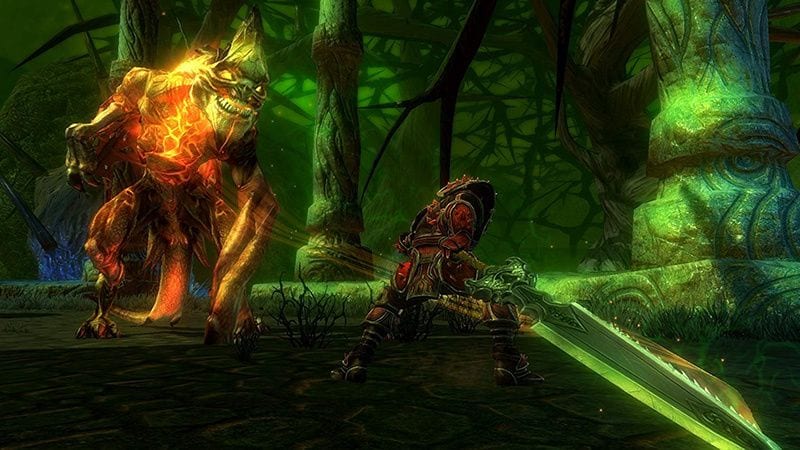
Many video game narratives – and I say this with a great deal of love – have been hackneyed, gormless, derivative things.
Again: said with love.
Riddled with cliché and cheesy dialogue, innumerable classic games have unapologetically relied upon plots no more complex than: ‘Bad Guys Kidnapped Your Lady – now go beat them up’, or ‘You are the chosen one for reasons – now stop the bad guys from destroying the universe’. Famously, even beloved works like Super Mario Bros are structured around the recursive premise: ‘Go Save the Princess from the Cartoonish Villain’, the game just fills out its bland concept with a mushroom-tripping plumber who savages turtles and a ‘roided up glam rock dinosaur antagonist with a castle fetish.
Over the years, however, as the artistry of video games has evolved, creators have experimented with the communicative potential of this interactive medium, leading to many game narratives that are not only more creatively diverse, they also become capable of offering fascinating interrogations of the art of storytelling itself. Games like Red Dead Redemption and The Last of Us have crafted densely realised journeys that explore the nuances of the genres they inhabit – apocalypse fiction and westerns, respectively. Serialised works such as Life Is Strange or the Mass Effect trilogy have imbued player choice with consequences that impact the plot, consequently investing the player in the direct development of the game’s universe.
A project like The Stanley Parable can cheekily toy with player agency; having the act of following or defying the dictates of an omniscient narrative voice spiral off into a surreal rabbit hole of prospective fictions. Meanwhile, the Kingdom Hearts series (the latest, supposedly final instalment of which has just launched) has turned what began as a curious exercise in franchise cross-promotion into the most expansively complex (or needlessly convoluted) cluster-bomb of giddy fanfic ever conceived, lovingly collapsing multiple universes into one Disney-branded uber-fantasy tale.
But one of the games that I have found most unique in its self-reflexive examination of videogame storytelling is the 2012 fantasy action role playing game, Kingdoms of Amalur: Reckoning.
This example might strike people as slightly odd. Kingdoms of Amalur: Reckoning is neither the flashiest nor the most highly regarded of games. Despite being beloved by a devoted contingent of fans, it has never been shown the regard it arguably deserves, underperforming on release (effectively tanking its production studios, Big Huge Games and 38 Studios), and never proving enough of a critical darling to garner a retroactive cult status.
Sadly, with the benefit of hindsight, it’s not too difficult to account for this relative obscurity.
Sure, it’s a game brimming with potential and stuffed full of game play, offering an unquestionably expansive, polished, playful exemplar of the fantasy RPG form. It has sprawling varied landscapes of spectacular verticality, filled with textured forests and rocky deserts, tumbling ruins and claustrophobic fairy haunts. It has the exploratory sprawl and narrative scope of The Elder Scrolls series (no surprise as it was developed by the designer of Oblivion and Morrowind), offers the third person kinetic action of games like God of War, and revels in a misty visual style reminiscent of the Fable series. But as these allusions indicate, the fantasy genre was already oversaturated with franchises such as Dragon Age, Dark Souls, World of Warcraft, and The Witcher, and perhaps there was little appetite for yet another epic offering several dozen hours.
Indeed, Kingdoms of Amalur: Reckoning wears its aesthetic influences proudly, with everything from its sound design to its visuals indicating that it’s a text woven from adoration of several other properties. There’s more than a little bit of The Lord of the Rings in the Elvish kingdoms depicted, and the music can be a bit John Williams-ish – specifically seeming to invoke the mythical moments of Indiana Jones at times. The whole game’s visuals can be quite beautiful if you’re inclined to embrace the Guillermo del Toro aesthetic its designers have steered into, and there’s a certain painterly, glowing sheen that makes traversing this space quite sumptuous. An unkind critic, however, might read all of these allusions as mere mimicry, just an amalgam of other beloved properties rather than a world in and of itself.
And then there is the issue of its title, which, to be blunt, is horrendous.
Kingdoms of Amalur: Reckoning.
It reads as thoroughly mystifying – presumptuous, even. It assumes that the audience is coming in with some prior knowledge, or has an inherent fascination with unpacking obscure arcane. After all, upon reading the title, before you know anything at all about the game’s subject matter, you are inundated with questions.
What, for example, is an ‘Amalur’? Presumably it’s a land, but there’s a plural in the mix there, so apparently there are alreadymultiple kingdoms and governments to get your head around. And who’s ‘reckoning’ is this? One of those kingdoms? All of them? The dude with the axe in the game’s cover art? And what exactly is being ‘reckoned’?
Also, what in the hell does that colon thinks it’s doing there?!
Obviously, this was intended to be the first in a whole game series, as that colon promises a series of sequels, each with equally vague but dramatic nomenclature, but for the first game in the proposed series it’s a bit obnoxious.
Meanwhile, even if you ignore all that and actually start playing the game, its inauspicious opening don’t exactly represent how innovative the remainder of the experience is going to be…
Firstly, it begins with amnesia.
Yeah.
That’s never a good sign.
In the conventions of videogame narratives, amnesia is about as rote a trope as you can possibly conceive. Outside of ‘They stole your girlfriend/murdered your wife!’ trope, perhaps nothing in gaming has been more overdone than your avatar waking up and not knowing who you/your avatar are. From Morgan Yu in Prey (2017) and Geralt in The Witcher (2007), to the protagonists of games like Flashback (2012), Gravity Rush (2012), Remember Me (2013), Fire Emblem: Awakening (2013), Cave Story (2004), A Dark Room (2013), and, of course, the titular Amnesia: The Dark Descent (2010), amnesia has been the go-to shorthand motivator to propel a player on their journey.In numerous other games it has utilised (with degrees of success that vary from hacky to mind-blowing), as a plot twist revelation, upending the player’s conception of their place in the fiction. But for every Bioshock jolt of mind-bendy surprise, there are a thousand games that use it as the thinnest pretext for lazily doling out exposition.
Secondly, in its early moments the game appears to be embracing every fantasy cliché. The dialogue is awash with talk of prophesies and races of elves and goblins and epic wars (even if many of the fantasy races described tend to have different names). And soon enough more tropes flood in, from evil armies to twisted magic prophesies, to thieves and bards and magical racial profiling. Even a great tree of wisdom pops up to ensure that all the Tolkien-derivative beats have been sounded.
If you persist and play on, however, you realise that all of these hacky conventions are being evoked quite deliberately to set up expectations that are to be swiftly undermined.
For example, this seemingly rote lack of back story is shown to not be the motivator for some revelatory plot; while you learn a little of the circumstances that got you killed, this glimpse of your past is by no means exhaustive, nor even memorable. Your travails before your death are not the answer to the dark secrets that will uncover the grand scheme of the evildoer whose actions have whatever, blah, blah, blah… Instead, your death primarily functions as an excuse to start as a blank slate and entirely make up your own journey.
This is where the real appeal of the game’s design emerges; because this is a vast landscape of narratives waiting to be tackled or ignored as you wish. Everything about the game, its plot, its interactivity, is intended to celebrate the player’s capacity to craft their own journey. Its genius is the way in which it marries the tired tropes of fantasy with the engrained conventions of videogame storytelling, ultimately subverting the expectations of both by virtue of its interactivity.
This narrative freedom is first evident in the character customisation and combat choices available. You can craft your appearance and outfits and abilities as you desire, creating wildly different personas, with enjoyably different controls. As mentioned, the third person combat is fun and frenetic and allows you multiple options to try out and re-spec as you wish. As a warrior you can load up on heavy weaponry and barrel through enemies in spry hack and slash encounters. As a rogue you can sneak and assassinate with bows and blades. Playing as a mage allows you to unleash splashy, satisfyingly destructive area effects. (Personally, having played as a warrior mage, I can say that the Chakrams I use, a fusion projective of blades, magic, and Frisbee-like discs, may well be my favourite weapon of any game ever.)
You can carry two weapons at a time and decide how you want to tackle encounters on the fly. Want to be a sneaky rogue – go ahead. Prefer bludgeoning your way through crowds as a marauding warrior – go for it. Like the thought of being a badass mage, shredding everything in your way by calling upon localised weather events of flame and lightning – do it. There are moments when you can tackle objectives from different angles – aggressive or sneaky. You can use persuasion to try to avoid some battles altogether. There are potions crafting and weapons making, books to read and exhaustive lore to unearth. And all the time you’re voiceless avatar is granted enough room to project your own personality into the events that they can be successfully role-played to be as much of a compliant do-gooder or exploitative cynic as you desire.
Meanwhile, in the tradition of the Elder Scrolls series from which it takes inspiration, the main story asks only as much of you as you wish to offer. Once you are set free into the open world the game presents a central quest for you to follow, but you are in no way compelled to do so. Indeed, it’s quite easy to miss the ‘central’ plot altogether.
Instead you come across potential stories everywhere.
Non-player characters dot the landscape and towns, each with their own tales within which you can choose to become involved or not. There are war veterans with PTSD; sleazy treasure hunters conning their way out of relationships; thieves and explorers and religious devotees and loners dazzled to bafflement by the magical creatures that dwell on their doorstep. Plagues and mysteries and frauds and prophesy, betrayal and hope and wonder – it’s all represented in an expansive landscape and population that’s absorbing and enticing all at once; one that you can skim across or deep dive into with glee.
There are, of course, the generic gameplay offerings familiar to RPGs such as killing spiders and hunting goblins and gathering herbs, but there are always far more unique and curious events the further out you venture. Soon you find yourself stumbling upon a village maddened by poisoned grain, negotiating the order of entry for a procession of dignitaries in a fairy counsel, rescuing a lonely weirdo from his (possibly knowing) attraction to an enchanting, murderous sprite. In one particularly enjoyable short story side quest you can save a forest village from a curious spider invasion, only to be rewarded with a fixer-upper, spider-infested house, which you might want to renovate into a quiet summer home.
And none of these plots bog you down. Each vignette is quick; all of the overlapping short stories that constitute the narrative, rocketing along at a steady clip, never waylaying you too long in your advancement. Within 20 days (of in-world play time) my player character had come back from the dead, escaped their grave, joined and risen through the ranks of a syndicate of adventuring thieves, started on her way to glory as a warrior for hire, become a Queen of Legend, and repeatedly upended the dictums of fate itself.
The most significant innovation of the game’s design, however, is the way in which it winds the videogame conceit of the player choosing their mission path on a whim into the heart of its premise. When your newly undead character is introduced in the opening level, you’re marked as a figure who has somehow defied the predestination of fate. In this land, ‘fate’ is the heart of most belief systems – one’s destiny is prescribed by the universe and cannot be altered – but you, by waking from the grave, have contradicted this fatalism. Playing out the game’s conceit, you ‘change’ your fate by exercising an autonomy denied the other characters in the game, and are free to dabble in their ‘fates’ (or plots) as little or as much as you wish. By undertaking the game’s varied missions and plotlines, you are effectively shaping your defiance of destiny.
By doing this, Amalur solves one of the most fundamental and persistent contradictions in videogame RPGs. In most such games you are told that you alone can stand against whatever abstract oncoming threat has been fashioned into the vague impetus for the plot. It is you who has been tasked with this great burden, you who holds the fate of the land, the world, sometimes the universe, in your hands. Whether its dragons in Skyrim, techno-Lovecraftian nightmares in Mass Effect, an historical fan-fic secret society of iconic bad-guys in Assassin’s Creed, or whatever glowering, spiky-haired fiend is oppressing the latest Final Fantasy epic, you alone are tasked with thwarting apocalyptic evil, and your pursuit of this goal is the only thing that can save the day…
Which somewhat breaks your immersion in the fiction whenever you subsequently spend two hours fishing, or running someone’s mail for them, or picking up ingredients for some random NPC’s MacGuffin spell of padding busywork.
All open-world RPG designers have had to tackle this incongruity: how can you tell a grand, compelling epic that will capture the player’s attention, without denying them the agency to tackle the game as they see fit? How much freedom can an overarching plot allow before it breaks apart into inconsequentiality? How can the player be nudged toward engaging in the central quest before they feel shackled to play it out in some restrictive on-rails order?
But rather than stumble over this inconsistency, like so many games before it, Kingdoms of Amalur: Reckoning builds it into its premise. You are the one who can potentially save this kingdom. You are the one precisely because you have the freedom to defy ‘fate’. Your game-breaking ability to walk away from whatever task doesn’t suit your mood at any given moment is the power that distinguishes you from everyone else in this world. You’re beholden to no set path or prophesy – not even the game’s own.
The significance of the player’s ability to break expectation is perhaps best exhibited by one of the primary factions of the game, a group of elves called the House of Ballads who are led by their reincarnated king. The House of Ballads, all devotees to the machinations of fate, believe in repeated cycles of determinacy, and to keep their history alive these elves actually devote themselves to reciting, and continuously restaging, in a mythic, fatal cycle of retelling, the fables of their past. Like the pre-programmed video game NPCs that they actually are, their belief system compels them to repeatedly find their predetermined marks, regurgitate their pre-written dialogue, and play out their pre-conceived roles, even dying and re-spawning in perpetuity. Only you, disrupter of these preordained sequences can enter and – only if you choose – rewrite ‘fate’.
At one moment in the game, at a time in which you have broken tradition and altered a myth that led to inevitable death, the King of the Summer Court – ruler of one of the two major factions of elves presented introduced – compliments you for your actions. What distinguishes you, he says, is that:
‘You do great things not because you must, but because you choose to. That is, by far, a far truer greatness.’
If you can get past the repetition of ‘far’, and the weirdness of the use of the word ‘truer’ (and the nagging realisation that it’s only by agreeing to complete the tasks allotted to you that this portion of the game can continue) and it’s quite a lovely sentiment about player agency. The plots, the mission structure, the game space, all are devised ahead of your arrival, but it’s only in the player’s choice to participate that the game can be. (Incidentally, there’s also a weird metaphor offered by the King after this moment in which he tells you that people are like puzzle pieces, but you, in contrast, are a dollop of paint, but at that point, the mixed metaphors collapse in on one another and poetry gets muddled.)
Again, if one were inclined to nitpick, Amalur is by no means a flawless game. The camera can be a cumbersome chore to wrangle at times (when wandering around new environments it will often actively drag your view away from some of the gorgeously designed landscapes on display to focus on the generic patch of ground passing by beneath your feet), and it clings to some tired old video game conventions. There are still women warriors wearing what constitutes as little more than a bikini with an inexplicable shoulder guard. Characters wield swords so large that they could cleave a townhouse in half. There are long video-gamey corridors that serve no architectural purpose except to extend a level. Bears and wolves, for no explained reason, seem to carry wallets, dropping gold coins and weapons after death. Sometimes you can leap off a ledge and plunge 30 feet to land like a feather while other times you cannot clear the barrier of a shin-high fence. All of the NPCs stand around, staring into the middle distance, waiting for you to arrive and fix their lives for them.
But what Kingdoms of Amalur: Reckoning does right – celebrating player agency, and specifically the player’s inclination toward defiance and distraction — it elevates the game into a unique dalliance between text and audience in which narrative is simultaneously celebrated and disregarded.
Kingdoms of Amalur: Reckoning sought to take many of the conventions of the videogame medium – including many of its most tired narrative tropes – to repurpose them into strengths. Consequentially agency, choice, exploration, and conflict, are all reworked into an expansive musing upon the conventions, and even the technical framework, of videogame fiction itself. In doing so, the game utilises the disparity that would otherwise exist between what a game’s plot says and what a player does, and turns an immersion breaking nonsense into a celebration of the adaptive way in which player and text interact, co-dependently propelling the game’s many narrative threads at their own pace.
In Kingdoms of Amalur: Reckoning you are tasked with saving the world, just like countless fantasy RPGs before it, but if you ignore that calling the game does not stall. You can care or not, get invested or breeze through on a whim, and both are perfectly fine .Amalur invites you to break the dictums of fate not just to explain away the rigidity of its medium, but to celebrate the fluidity of its audience’s attention and the freedoms afforded by play.




